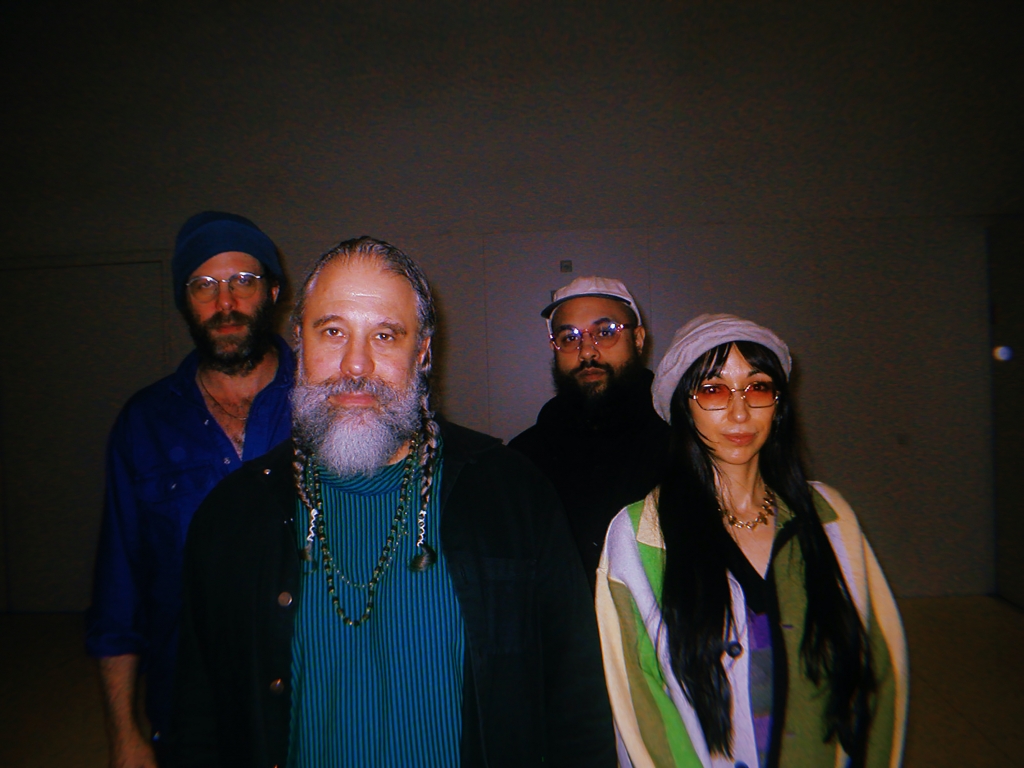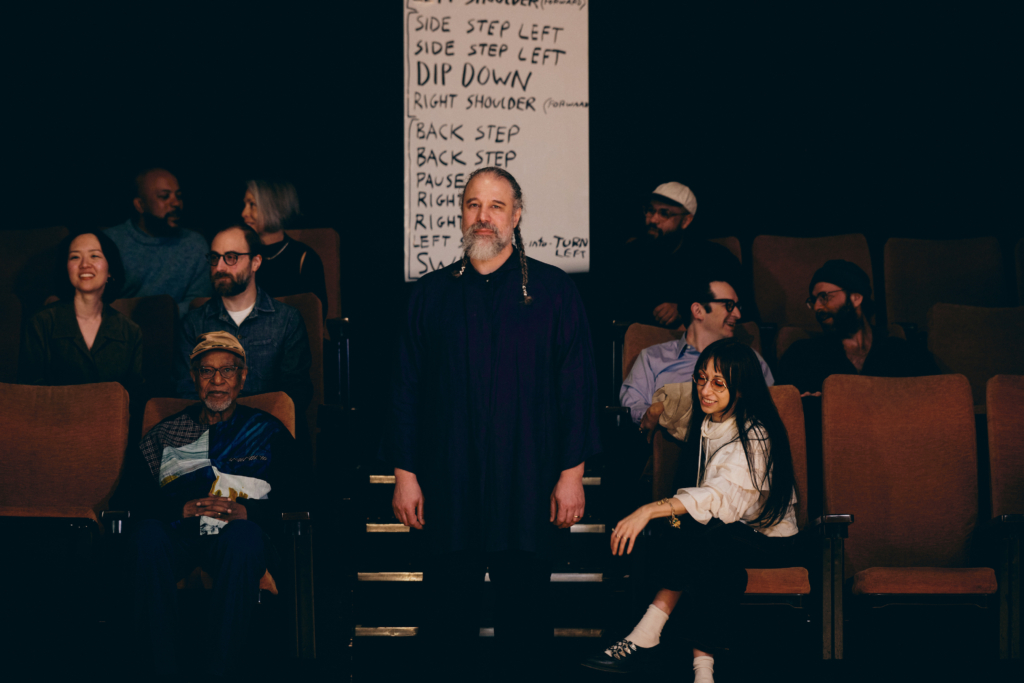Natural Information Society
Since Time Is Gravity (eremite Records)
Contact Jacob Daneman, Sam McAllister, Ahmad Asani about Natural Information Society
The next chapter of the Natural Information Society is here. Today, they announce Since Time Is Gravity, their new album out April 14th on eremite North America, Aguirre/eremite Europe, and share the lead single “Stigmergy.” Since Time Is Gravity presents a newly expanded manifestation of acclaimed composer and multi-instrumentalist Joshua Abrams’ nearly 15 year, 7-albums-and-counting ensemble. Joining the core Natural Information Society of Abrams (guimbri & bass), Lisa Alvarado (harmonium), Mikel Patrick Avery (drums), and Jason Stein (bass clarinet) are Hamid Drake (tabla, tar), Josh Berman and Ben Lamar Gay (cornets), Nick Mazzarella and Mai Sugimoto (alto saxophones & flute), Kara Bershad (harp), and Chicago living legend Ari Brown on the tenor saxophone.
“‘Stigmergy’ is an ensemble ostinato orbiting an Ace Tone Rhythm Ace”, explains Abrams, “refracted through Echoplex, dedicated to Arkestra pioneers Robert Barry and Ronnie Boykins.”
Since first developing the Natural Information Society in 2010, Joshua Abrams has been gradually expanding the group’s conceptual underpinnings, its musical references, and the sheer number of the group’s members. Their music is, in a sense, an expansive form of minimalism, based in repeated and overlaid rhythmic patterns, ostinatos and modalities. Their roots, scale, and meaning only become clearer in time. And since time is gravity, it also allows us to carry more. Having begun fundamentally as a rhythm section with Abrams’ guimbri at its core, the version of Natural Information Society here can stretch to a tentet, including six horns.
As Natural Information Society expands on Since Time Is Gravity, Abrams has made certain jazz traditions in the same stream more explicit as well. If there is a mystical and elastic quality involved in the experience of time, both in direction and duration, you will catch it here. The parts for the choir of winds expand on the roles of Abrams’ guimbri, Avery and Drake’s percussion, and Alvarado’s harmonium: at times, the winds are almost looping in the tentet version, each hitting a repeating note in turn, at one drone and distinct inflection on temporal sequence. The brilliance of the work resides in Abrams’ compositions, the Natural Information Society’s intuitive execution, and in Ari Brown’s singular embodiment of the great tenor saxophone tradition.
George Lewis has described music as “a space for reflection on the human condition.” This suggests that, rather than a “distraction,” at least some music might serve as a distraction from distraction. It’s a focus, a clarity, an awareness, an external invitation to interiority, as if music itself is a model for form and contemplation, an organism contemplating for us or as us. If that is a possibility, then this is the music.
Read Stuart Broomer’s full liner notes to Since Time Is Gravity here.


